EK CoolStream CE 280mm Radiator Review
Welcome to another Extreme Rigs 280mm radiator review. Today we’ll be looking at the CoolStream CE 280 from EKWB. It’s a 45mm thick radiator from the revamped 140.x range which was released in July 2015. The CoolStream CE Series replaces the XTC range and brings a redesigned core package to EK’s 140.x radiators along with visual looks that matches the rest of the EK’s radiators.
In our review of the CE 280 we’ll take a close look at it’s construction & quality, analyze the performance data by comparing it’s results against other 280mm radiators and then conclude with a summary.
This review will complete our “CE Slam” having previously reviewed the CE 140 and CE 420 versions. So be sure to check them out after you’re finished reading this review.
Firstly a big thanks to EK Water Blocks for providing the review sample of the CoolStream CE 280. Since we commenced our radiator testing, EK’s commitment to our independent tests has been second to none. Extreme Rigs couldn’t publish the reviews we do without the continued support offered by our sponsors, so a big thanks to all the crew at EK.
Before we start we would again like to say thanks to Noctua for providing the NF-A14 Industrial PPC-2000 IP67 PWM 140mm fans. We use these fans for all our 140mm based radiator thermal performance testing because they have great static pressure which is required to get the best performance from even densest of radiator cores and of course, their proven reliability.
What’s in the Box?
The CE 280 sample arrived in full retail packaging featuring EK’s lime green color code used for their radiators and fans.
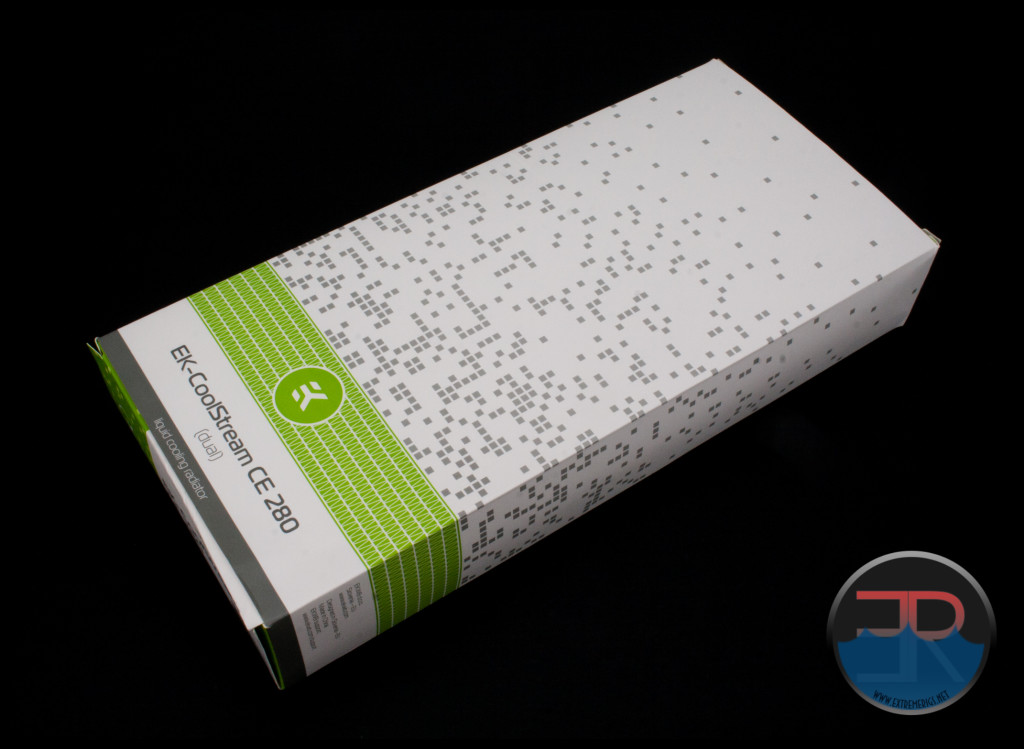
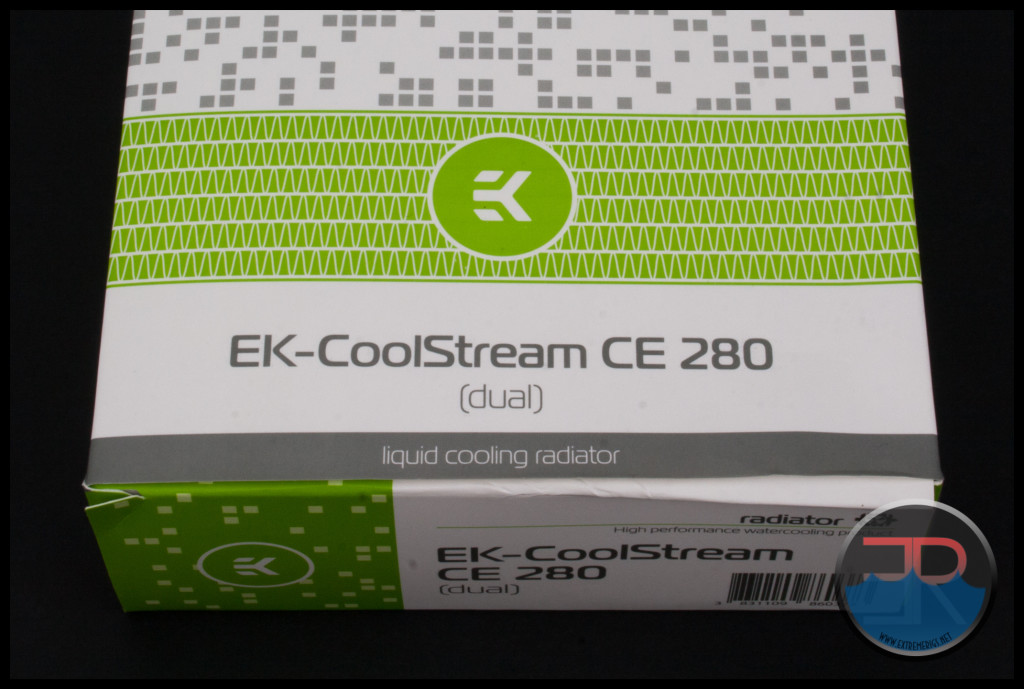 The graphics are plain and simple, but I do like the band of radiator fins
The graphics are plain and simple, but I do like the band of radiator fins
On the back, some key points and technical details are listed.
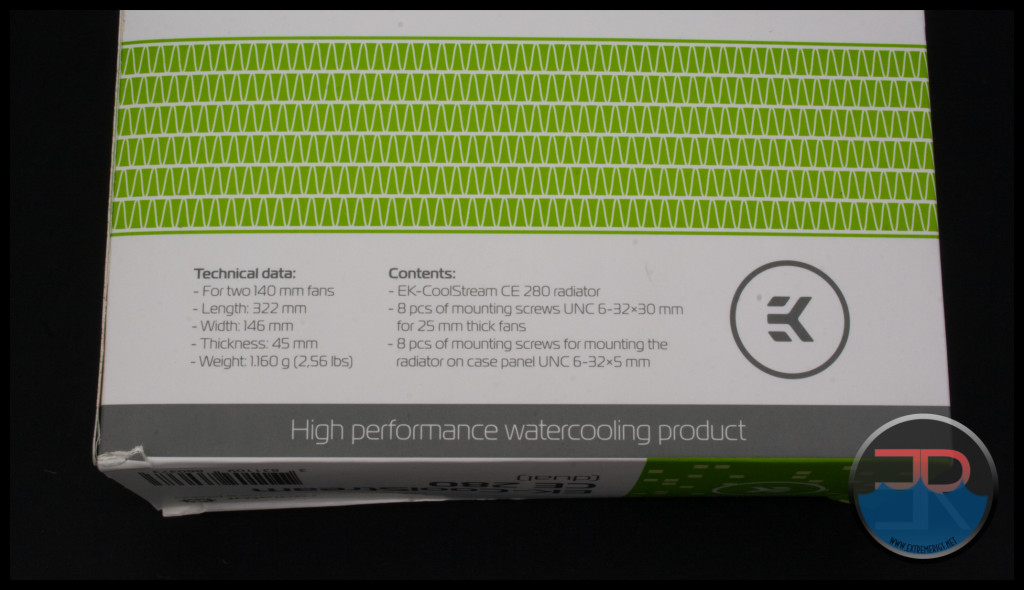
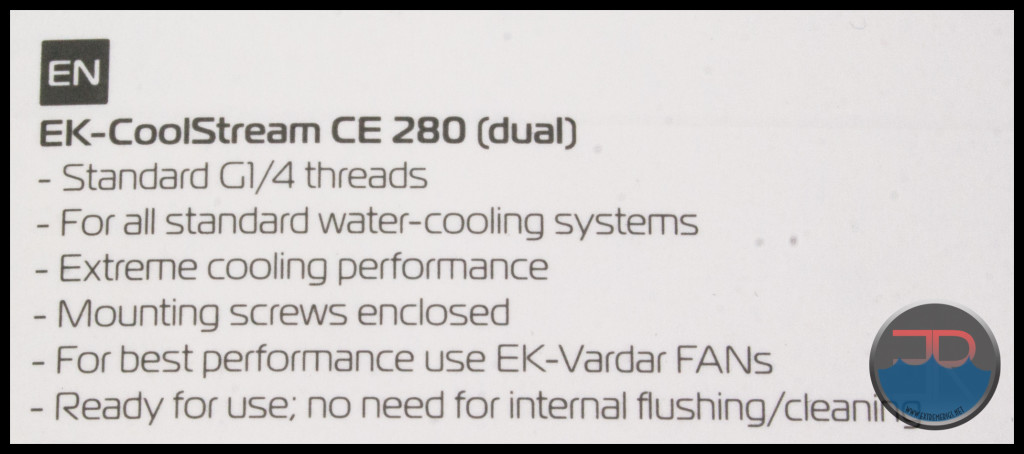 We won’t begrudge EK some free in-house marketing on the fans, however we would really like to see some data on the Vardar fan statement. Our feelings about the “ready for use” key point are well known to regular readers by now. We’re certainly not implying that the EK radiators are more dirty than others. However we do feel the statement is misleading for newcomers to custom water cooling and we always recommend that end users flush any new radiator prior to installing into their system.
We won’t begrudge EK some free in-house marketing on the fans, however we would really like to see some data on the Vardar fan statement. Our feelings about the “ready for use” key point are well known to regular readers by now. We’re certainly not implying that the EK radiators are more dirty than others. However we do feel the statement is misleading for newcomers to custom water cooling and we always recommend that end users flush any new radiator prior to installing into their system.
Removing the outer sleeve we find a sturdy shipping box.
Opening the box, we see what has become the standard packing layout for EK radiators. Not visible is the supplied accessories which are placed at one end of the box.
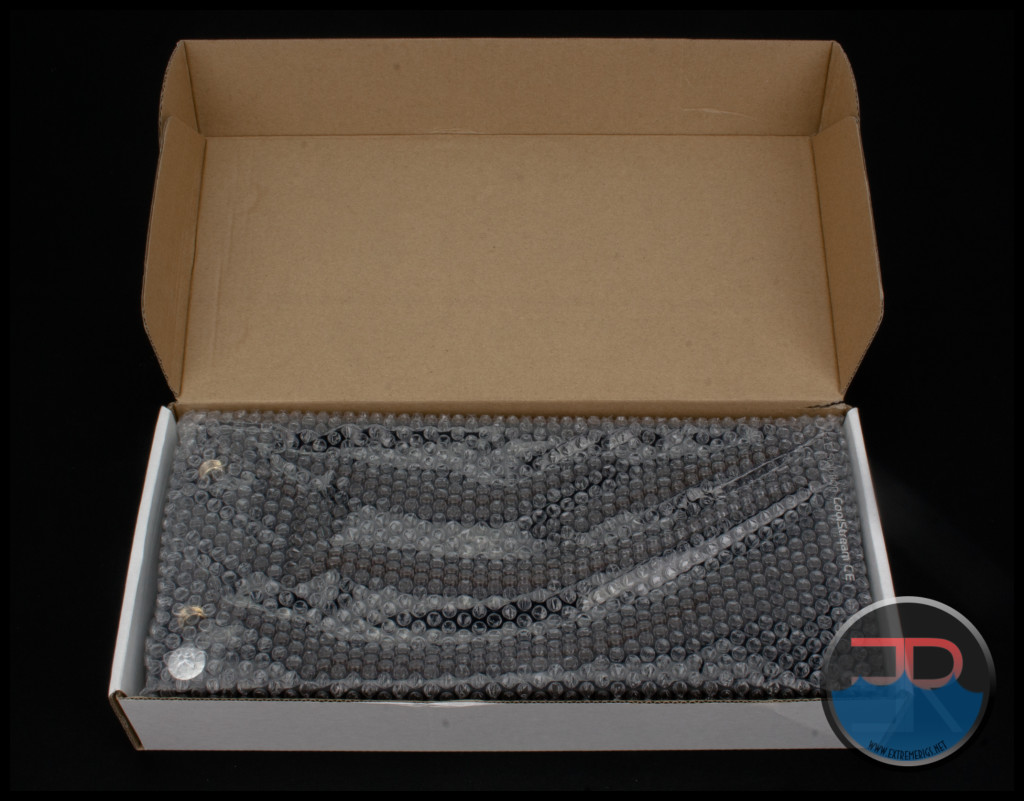 The radiator has a bubble wrap sleeve which offers protection to the paint finish from scratches and scuffing.
The radiator has a bubble wrap sleeve which offers protection to the paint finish from scratches and scuffing.
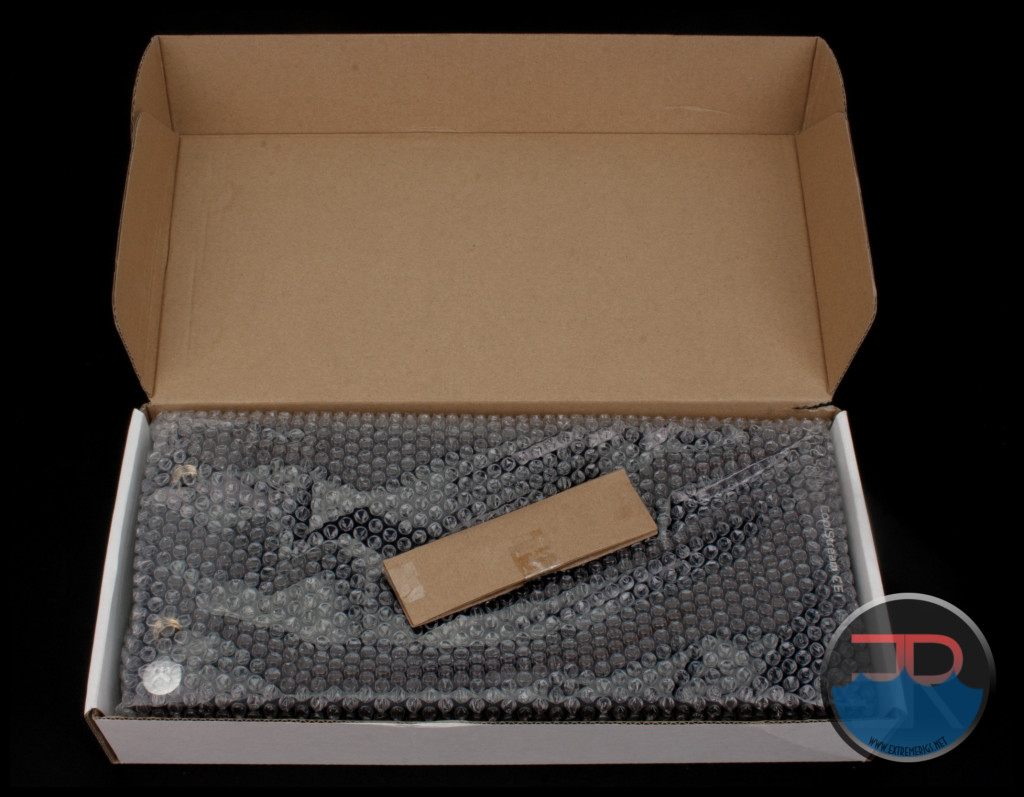 The accessories are in a piece of taped up cardboard tucked safely at one end of the box. This prevents the accessories becoming loose during transport and helps keep the fragile core from sustaining any damage. Simple yet effective.
The accessories are in a piece of taped up cardboard tucked safely at one end of the box. This prevents the accessories becoming loose during transport and helps keep the fragile core from sustaining any damage. Simple yet effective.
Extent of delivery as listed by EK:
“– EK-CoolStream CE series radiator /w two pre-installed G1/4 extenders
– Flat-head UNC 6-32 screws (l=30mm)
– Flat-head UNC 6-32 screws (l=5mm)
– Allen key 2,5mm
– Allen key 9mm”
The above contents list is what EK currently have on their website, however the packaging makes no mention of the 9mm Allen Key (or the 2.5mm Allen Key). The review sample was not supplied with the 9mm Allen Key which is used for loosening or tightening the port extenders as we will see later.
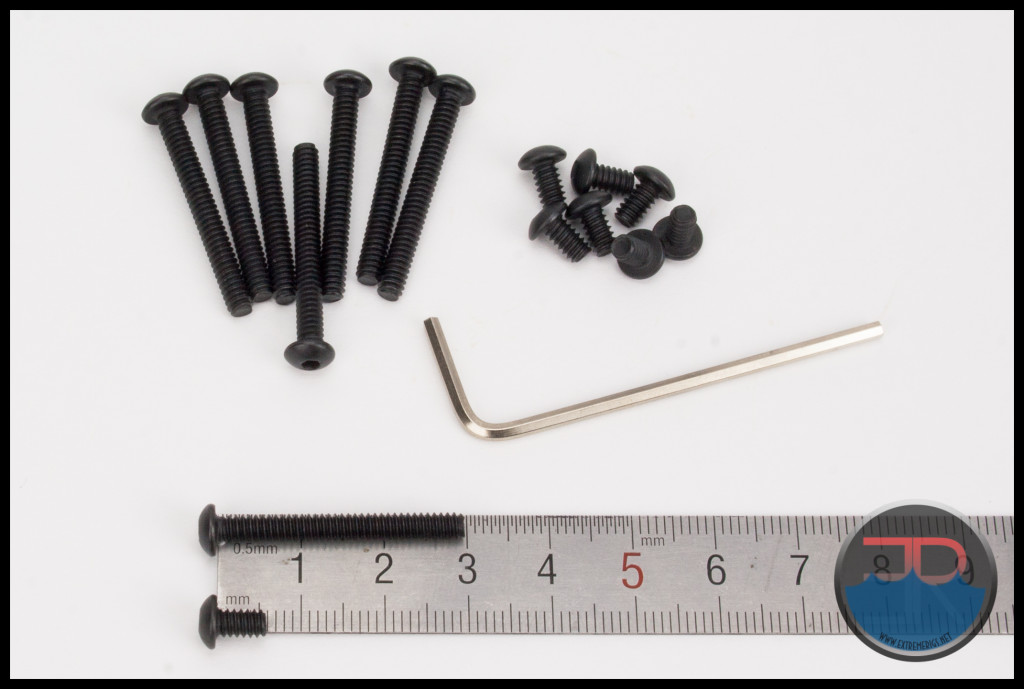
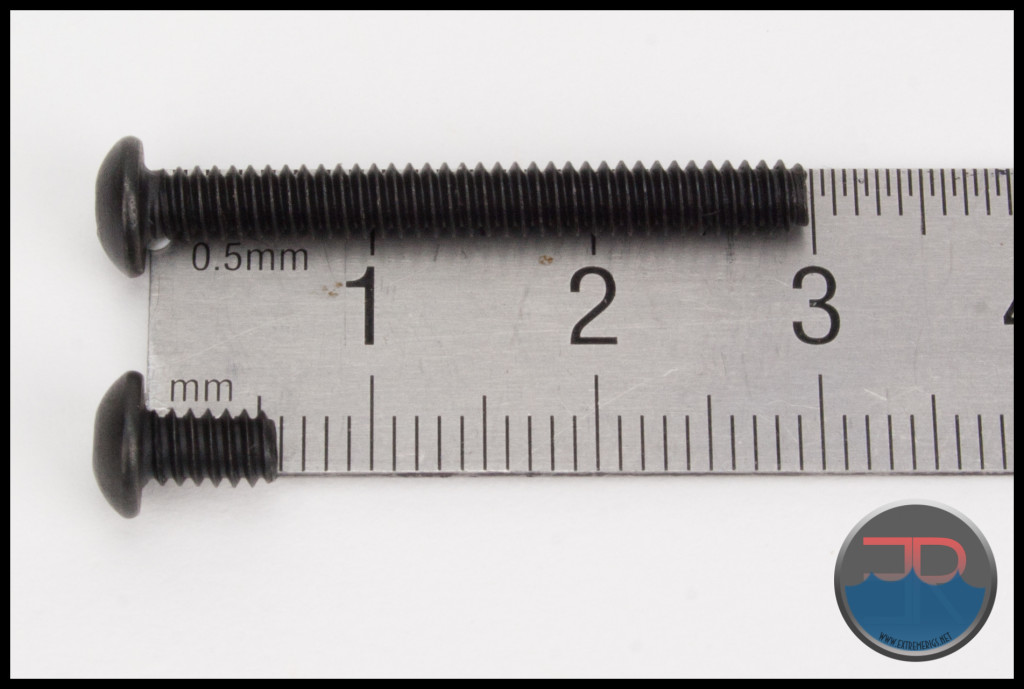
The shorter screws measure in at 6mm, while the longer ones are 30mm.
8 screws of each length are provided, so there are enough to fit the radiator with either a Push Only or Pull Only fan assembly straight from the box, but NOT Push/Pull.
The following caution note is from the EK website, but was not found anywhere on or in the package the review sample arrived in.
 So we have been warned, choose screw lengths carefully, particularly is using a mounting bracket or vibration reducing gaskets and remember to make compensation for the amount of compression when tightening down with gaskets installed.
So we have been warned, choose screw lengths carefully, particularly is using a mounting bracket or vibration reducing gaskets and remember to make compensation for the amount of compression when tightening down with gaskets installed.
The shorter 6mm screws have two possible functions. Either mounting the radiator directly to a case panel or to attach mounting brackets for other components such as pumps or reservoirs.
Onwards to technical specifications!








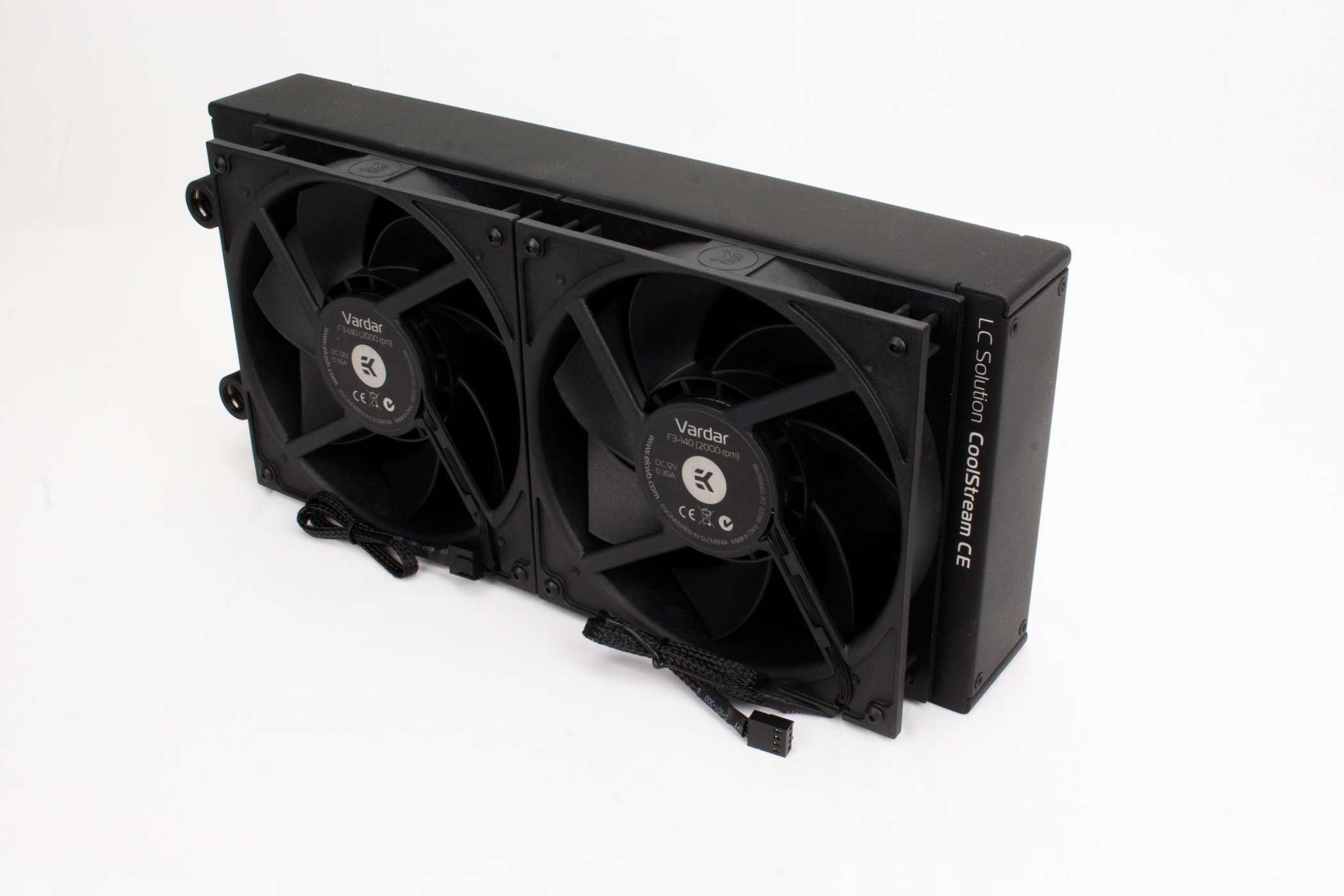

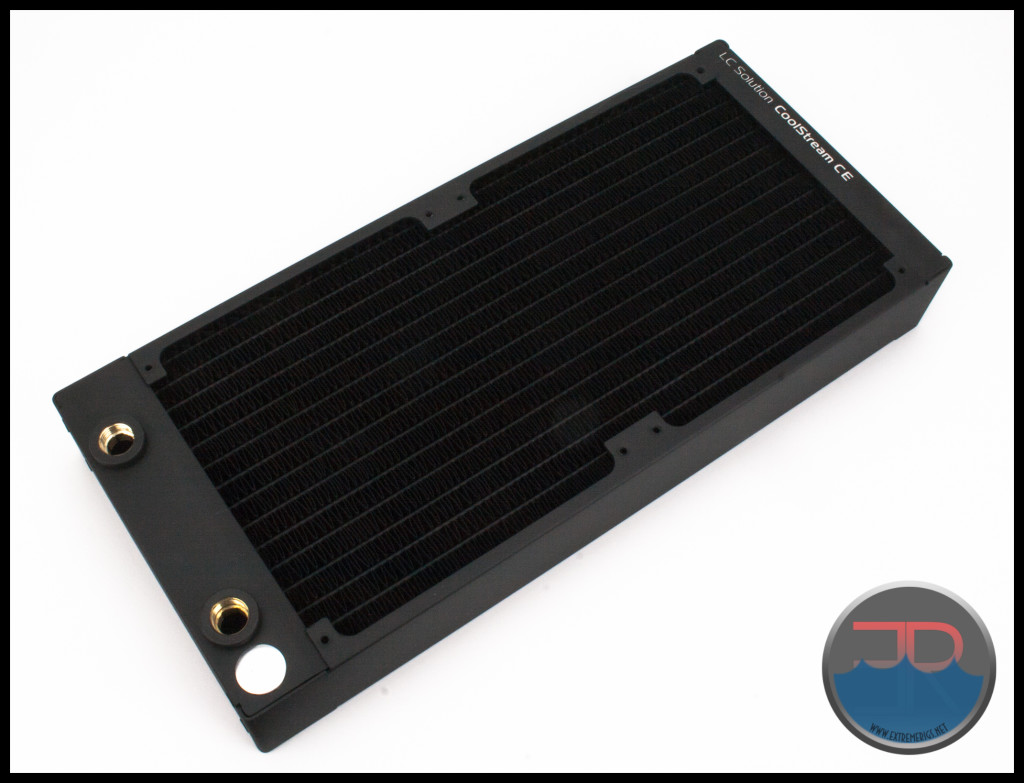

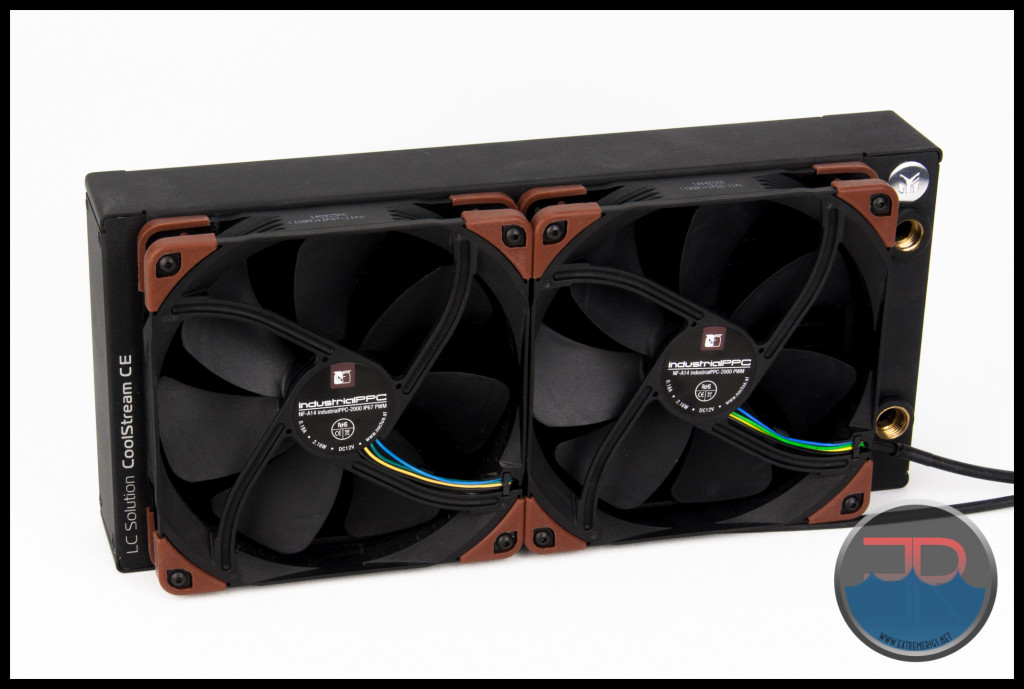
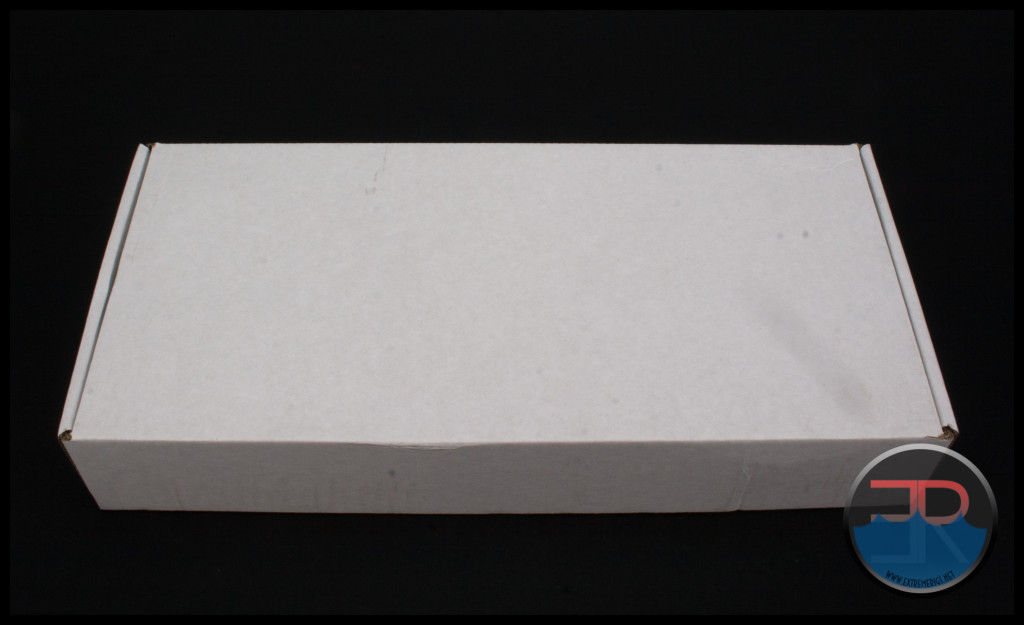
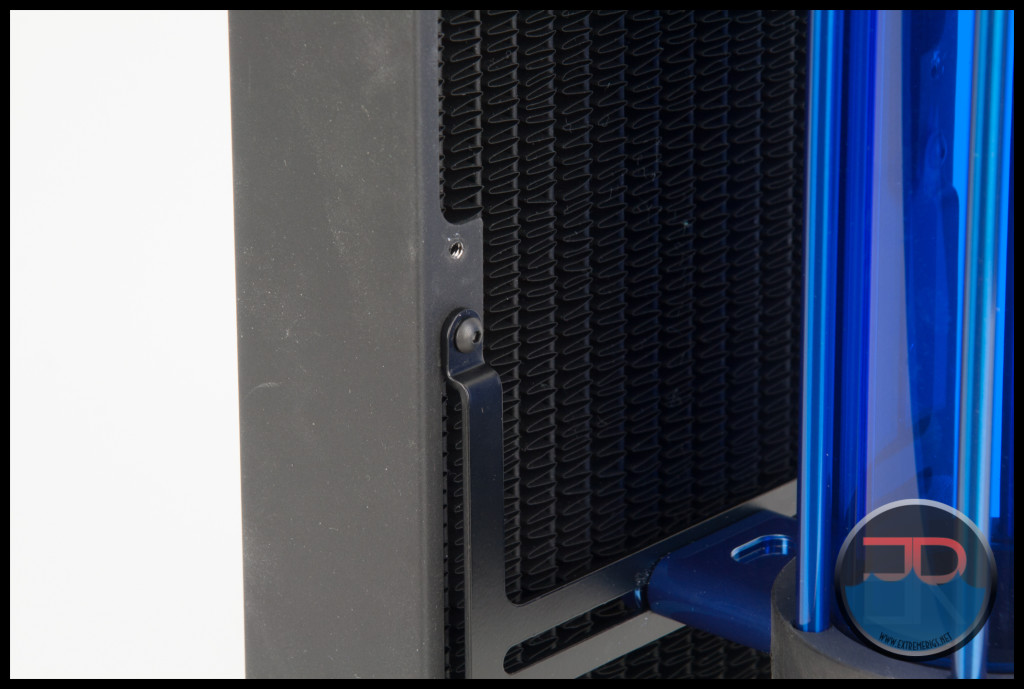



Your dear should specify the results in Celsius, Fahrenheit or Kelvin throughout your test. Because a conversion from Watts to the indicated temperatures is very inaccurate.
There is no formula with which you can convert from Watts in Celsius, Fahrenheit, or Kelvin, therefore your information is not meaningful and belong in a storybook
If you give me even a chemical or physics book shows where the formula is there, you would win the Nobel Prize. Other websites have soagr refuted your moronic calculation.
Thanks Steffen for your well researched and objective comment. All the plots are clearly labelled “Deg C” meaning degrees, celsius. So I’m not sure if you actually read the article or if you’re another keyboard jockey who wants to shit over other’s hard work because you have nothing better to do? As for our “moronic” calculation. Yes actually there is a calculation to generate power dissipation from temperature change within a liquid. If you know your flow rate, as we do, then you can use the specific heat capacity of the volume of water in question (the coolant in question) combined with the temperature change of the water to generate the energy cooled/second. Energy/Time is also know as Power (at least for steady state equilibrium as this is). So yes thank you for the offer but there is no need to award us a nobel prize for such basic physics, but maybe a bit of humble pie for you would be in order? Maybe even cite your sources next time as to why our calculation is so “moronic”?
Well, I found your reviews VERY helpful; in fact, I’m basing my purchase from info in your reviews…I need a dual fan (push only) radiator that’s 50 mm thin or thinner, that’s readily available (price don’t too much matter)…based on your reviews, and the needs listed above, I have decided on this EK Coolstream 280 CE (with the Alphacool XT45 coming in a close 2nd). I don’t have fans for it yet, because that’s depending on the rad being purchased (this rad is just being used as a secondary rad to the main Aquacomputer 480 rad I have).
Comments are closed.